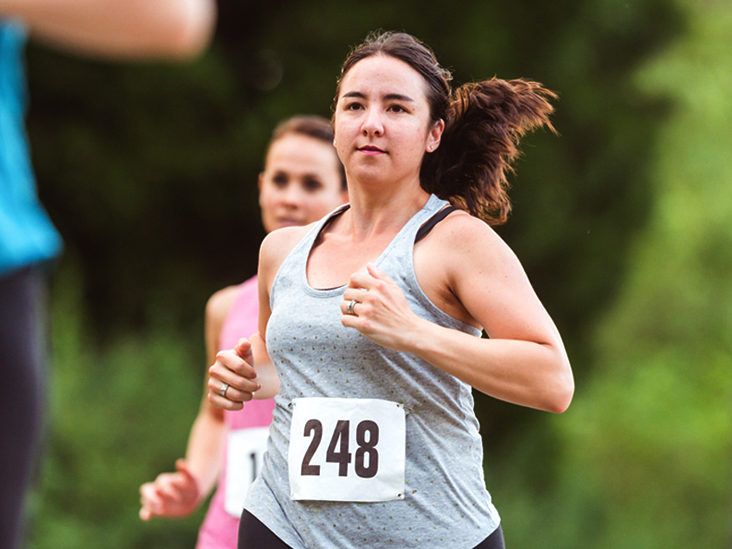For a long time, running speed has been considered a very important quality that affects the performance of special sports in many sports, such as track and field, various team ball games, etc. Today let’s talk about the key factors that affect running speed performance.
Here we define running speed as: the time it takes to run a specific distance. From this perspective, there are only two factors that determine running speed, one is stride length and the other is cadence. Stride length refers to the distance the body’s center of gravity moves horizontally with each step, while cadence is the number of steps per second.
Cadence and stride length:
So what determines cadence and stride length?
Cadence:
Cadence is determined by the rotation time of the two legs, which can be further divided into air time and ground contact time. According to relevant research, there is not much difference in the flight time of runners with different speeds. The difference is more reflected in the contact time. Therefore, the contact time is the key factor affecting the cadence;
Stride length:
The stride length depends on the momentum and speed when you leave the ground.
(Impulse = force multiplied by the duration of the force, which means that the greater the force of kicking when we run, the longer the duration of kicking, the larger the stride)
There is a certain contradiction between stride length and cadence. They can be improved at the same time, but there is no way to reach the extreme at the same time. For example, when the stride frequency increases, maintaining the stride length mainly depends on whether more force can be generated in a short period of time, otherwise it will inevitably lead to a decrease in stride length.
At this point, in order to facilitate everyone’s understanding, we have to talk about the action stages of running.
The action phase of running can be divided into two phases, namely the support phase and the airborne phase.
The support period begins when the foot touches the ground and ends when it leaves the ground;
The airborne period begins when the feet leave the ground and ends when the feet touch the ground. These two stages determine the performance of cadence and stride length, as well as the speed of running speed.
The support period can be further divided into three sub-stages: early support, mid-support and late support.
The task in the early stage of support is to make eccentric retreat of the lower limbs to absorb the force of landing, and at the same time to rapidly lengthen the muscle membrane to accumulate elastic potential energy. Therefore, great emphasis is placed on the rigidity of the lower limbs. The strength of the eccentric force of the lower limbs determines the performance of the early stage of support.
tips:
The greater the centrifugal force, the shorter the retreat distance, and the faster the conversion speed to concentric contraction. If the eccentric force is too weak, it will cause the process to become longer, and the elongation speed of muscles and fascia to slow down, affecting the accumulation of elastic potential energy, which in turn affects subsequent centripetal contraction force, and will also produce significant braking, resulting in Speed drops.
The task of mid-support is to convert from eccentric contraction to absorb the force of landing to concentric contraction to exert force. There will be a very short isometric contraction. At this time, the maximum force in the vertical direction will be generated. Therefore, the core and single Whether the hip joint on the side can stabilize the pelvis without causing unnecessary movements and ensure the smooth transmission of force is an important factor in determining the mid-term performance of the support.
The task in the later stage of support is to exert force through concentric contraction, release the elastic energy accumulated in the early stage, and move the body forward. Therefore, the ability to produce force through concentric contraction in a short period of time determines the performance in the later stage of support.
Poor performance in the first two stages will affect both step frequency and stride length. In the latter stage, when the strength and power remain unchanged, longer time will cause the stride length to increase and the step frequency to decrease, and vice versa.
There is no contact with the ground during the flight period, so no force on the ground can be generated, so it is the support period that has a greater impact on speed. But this does not mean that the flight period is not important. The impact of the flight period on speed is reflected in the need for efficient and smooth rotation of the legs to prepare for the next landing. Otherwise, the landing posture will be affected, thereby affecting the performance of the support period.
For example, if the hip flexion speed during the flight phase is not enough, it will affect the hip flexion range. The limited hip flexion range will further affect the space for hip extension to accelerate force, which will reduce the force capability during the support phase and affect the overall speed. Therefore, the swing period and the support period are complementary and influence each other.
Finally, let us summarize that the factors that affect running speed are determined by stride frequency and stride length. The movement of running can be divided into the air phase and the support phase. The performance of these two phases affects the stride frequency and stride length.
In the support period, it is reflected in: the centrifugal buffering ability in the early stage of support, the stability in the middle stage of support, and the short-term centripetal force ability in the end stage of support;
During the airborne period, it is reflected in the efficiency and smoothness of the lower limb rotation, and whether it is ready for the next support stage.




